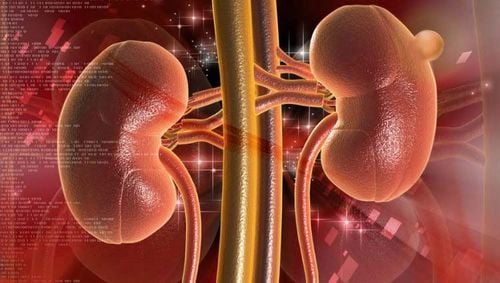This is an automatically translated article.
Saditazo drug is indicated for use in the treatment of respiratory tract infections, glomerulonephritis, urinary tract infections, dental infections, and bacteremia. To ensure the effectiveness of use when using Saditazo, users need to follow the instructions of their doctors, and refer to more information about the uses of Saditazo in the following article.1. What are the uses of Saditazo?
1.1. What is Saditazo?
Saditazo is an anti-bacterial, anti-viral, anti-fungal, anti-parasitic drug.Saditazo medicine contains Piperacillin (in the form of piperacillin sodium) 4g; Tazobactam (as Tazobactam sodium) 0.5g and packaged as a powder for injection
1.2. What does Saditazo do?
Saditazo is indicated for the treatment of confirmed or suspected systemic or local infections caused by susceptible organisms, lower respiratory tract infections, complicated urinary tract infections, intra-abdominal infections, and infections. soft tissue skin, sepsis, obstetric and gynecological infections, polymicrobial infections.Piperacillin/Tazobactam is active with aminoglycosides against some strains of Pseudomonas aeruginosa, especially in patients with impaired resistance.
2. Usage of Saditazo
2.1. How to take Saditazo
Intravenous injection: Each vial of 4.5 g mixed with 20ml of sterile distilled water or 0.9% NaCl injected slowly over 3 - 5 minutes. Intravenous infusion: Each 4.5g vial is mixed with 20ml of sterile distilled water or 0.9% NaCl, then further diluted to at least 50ml intravenous infusion over 20-30 minutes.2.2. Dosage of Saditazo
Adults and children over 12 years:4g piperacillin/0.5g tazobactam IV every 8 hours. The total daily dose may vary from 2.25g to 4.5g every 6 to 8 hours. Children under 12 years of age:
There are not enough data to study the use of the drug in children under 12 years of age. Patients with renal impairment:
Piperacillin/Tazobactam dose must be adjusted according to creatinine clearance:
Creatinine clearance 20 - 80ml/min: 12g/1.5g/day divided into 4g/500mg every 8 hours. Creatinine clearance < 20ml/min: 8g/1g/day divided into 4g/500mg every 12 hours. For patients on hemodialysis, the maximum total daily dose is 8g Piperacillin/ 1g Tazobactam. In addition, because a 4-hour dialysis cycle can remove 30-50% of piperacillin, an additional 2g/250mg Piperacillin/Tazobactam should be injected after each dialysis cycle.
Duration of treatment: In case of acute infection, Piperacillin/Tazobactam must be continued for at least 48 hours after the fever is gone or the clinical symptoms have resolved.
2.3. Handling missed dose
Usually, medications can be taken within 1-2 hours of what is prescribed in the prescription. Unless there is a strict rule about the time of use, the medicine can be taken a few hours after the missed dose is detected. However, if the time is too far from the time you need to drink, you should not make up for it because it can be dangerous to the body. It is necessary to strictly adhere to or consult a doctor before making a decision.2.4. Treatment in case of overdose
In emergency situations, all additional medical measures are indicated as for piperacillin. Excessively high concentrations of piperacillin in the serum can be removed by dialysis.However, doses of 24g piperacillin/day or more have been used in humans without any adverse effects observed. In cases of convulsions, anticonvulsants (eg, diazepam or a barbiturate) may be indicated. In the case of severe anaphylaxis, immediate treatment measures should be initiated.
In case of severe and persistent diarrhea, the possibility of pseudomembranous colitis must be considered. Therefore, piperacillin/tazobactam should be discontinued and a new therapeutic dose (eg, oral teicoplanin or oral vancomycin) initiated. The use of drugs that inhibit intestinal motility is contraindicated.
3. Note when using Saditazo
Before initiating piperacillin/tazobactam therapy, a thorough history of allergy to penicillins, cephalosporins or other allergens should be sought. If an allergic reaction occurs during treatment with piperacillin/tazobactam, the drug must be discontinued. Serious hypersensitivity reactions may require management with adrenaline and other emergency measures.Although piperacillin/tazobactam has a low toxicity characteristic of penicillin antibiotics, it is still advisable to periodically check the function of organs such as kidneys and liver during long-term therapy.
Bleeding manifestations have occurred in some patients treated with beta-lactam antibiotics. These reactions will sometimes occur in association with abnormalities on coagulation tests such as clotting time, platelet aggregation, and prothrombin time and are more common in patients with renal impairment. If hemorrhagic manifestations are expected to occur as a result of antibiotic therapy, the drug should be discontinued and appropriate therapy instituted.
As with other antibiotics, the possibility of resistant strains of bacteria should always be borne in mind, especially during prolonged treatment. If this occurs, appropriate action must be taken.
As with other penicillins, patients may experience neuromuscular agitation or convulsions if doses higher than the recommended dose are administered intravenously.
Periodic ionography should be measured if the patient has low potassium stores, and always be aware of the possibility of hypokalemia in patients with extremely low potassium stores and those receiving cytotoxic therapy or use diuretics. A slight increase in liver function indices can be observed.
Short- and high-dose antibiotics to treat gonorrhea can slow the onset of syphilis symptoms. Therefore, patients with gonorrhea should be tested for syphilis prior to treatment.
There are no adequate studies on the use of piperacillin/tazobactam during pregnancy and lactation. Piperacillin/tazobactam does not affect fertility. However, pending full experimental results, pregnant or lactating women should be treated only when the potential benefit outweighs the risk to the patient and fetus.
4. Side effects of the drug Saditazo
Local adverse events reported as possible, possibly or identified as being related to piperacillin/tazobactam treatment were phlebitis (0.2%) and thrombophlebitis (0.3%).The most common clinical systemic adverse reactions reported, which could or were determined to be related to piperacillin/tazobactam treatment were diarrhea (3.8%), rash (0.6%), erythema (0.5%), pruritus (0.2%), vomiting (0.4%), nausea (0.3%), allergic reactions (0.4%), urticaria (0.2%), and superinfection (0.2%).
Some other clinical systemic adverse reactions reported possibly related to piperacillin/tazobactam treatment but with a frequency less than 0.1% were: Skin reactions, sweating, erythema multiforme, eczema, rash , maculopapular rash, stomatitis, constipation, muscle weakness, hallucinations, dry mouth, hypotension, myalgia, superficial phlebitis, fever, flushing, edema, fatigue. Local reactions include inflammation or pain at the injection site due to not mixing the medication as directed.
Adverse clinical adverse events reported in studies but not determined to be drug related were transient decrease in white blood cell count, eosinophilia, thrombocytopenia, thrombocytopenia, Coomb positive test, hypokalemia, transient elevation of liver enzymes (SGOT, SGPT, alkaline phosphatase) in serum, bilirubin. Rarely, increases in renal function parameters (urea, creatinine) have been detected in serum.
5. Saditazo drug interactions
Co-administration of probenecid with piperacillin/tazobactam increased the half-life and clearance rate of both piperacillin and tazobactam, but peak plasma concentrations of the components were not affected. No drug interactions were observed between piperacillin/tazobactam and vancomycin or tobramycin.When combining piperacillin/tazobactam with another drug, do not mix in the same vial or inject at the same time due to physical incompatibility.
When used concomitantly with high-dose heparin, oral anticoagulants or drugs that affect the coagulation system and/or platelet function, coagulation parameters should be measured more frequently and carefully monitored. more kidney.
6. How to store Saditazo
Lyophilized Powder: Vials containing piperacillin/tazobactam lyophilized powder can be stored at controlled room temperature (15 - 25°C) for up to three years. When mixed according to directions, the drug remains stable for 24 hours if kept refrigerated (2 - 8°C). The diluted drug can be kept for 24 hours at cold (2 - 8 °C) and stored in an infusion bag or syringe. Reconstituted medicine that is not in use must be discarded. Piperacillin / tazobactam also must not be mixed with other drugs in the same syringe or in the same bottle of infusion Read carefully the instructions for storage of the drug listed on the package and the instruction sheet for Saditazo medicine. Please check the expiry date of the medicine. When not in use, the drug must be collected and disposed of according to the instructions of the manufacturer or the person in charge of the medical profession. Conventional drugs will be stored at room temperature, avoiding direct sunlight or high temperature, which can convert the ingredients in the drug.Please dial HOTLINE for more information or register for an appointment HERE. Download MyVinmec app to make appointments faster and to manage your bookings easily.













